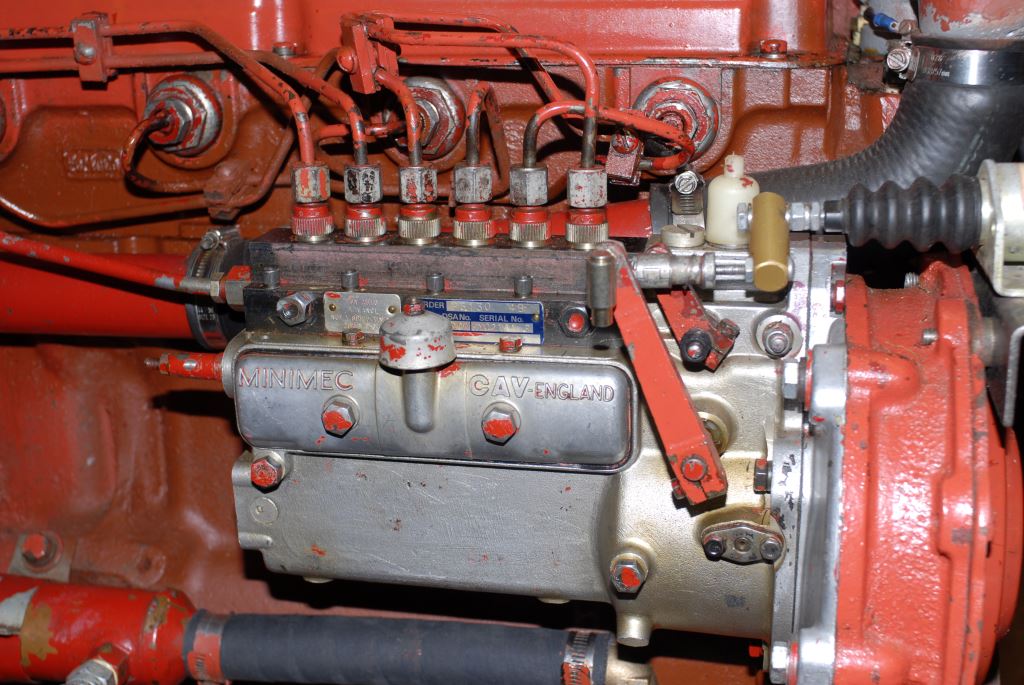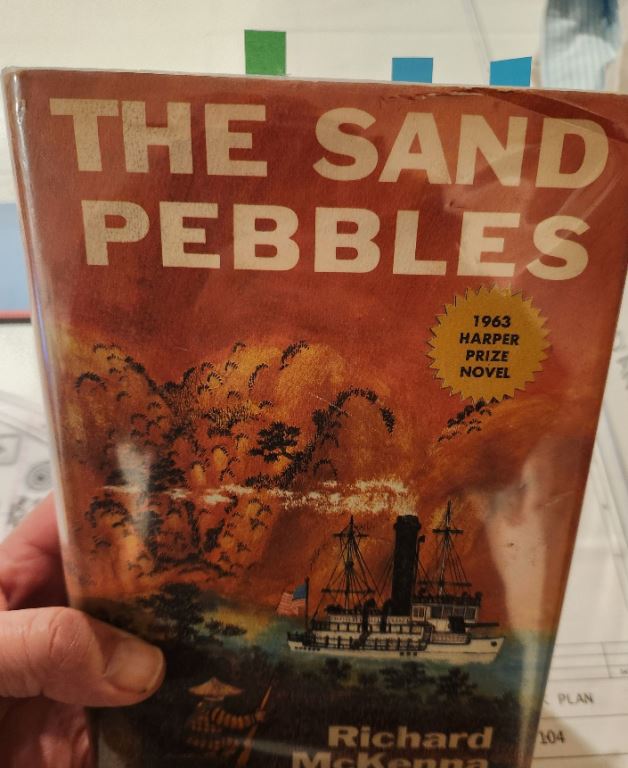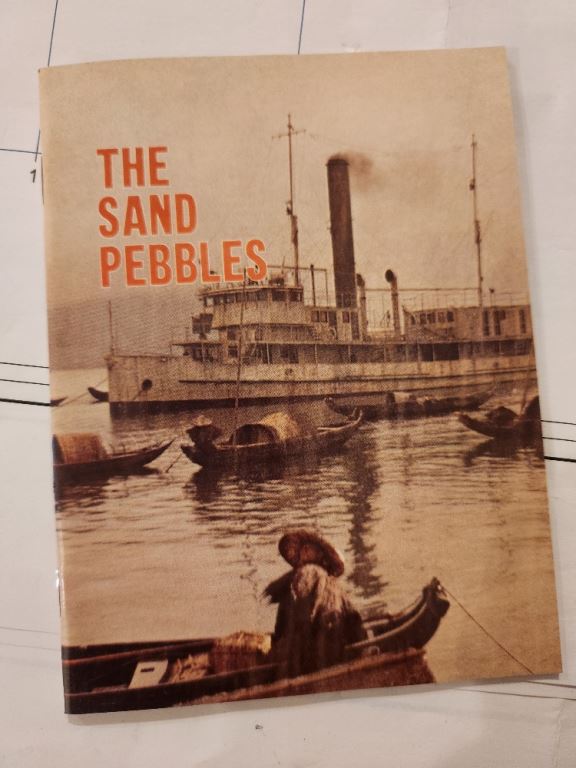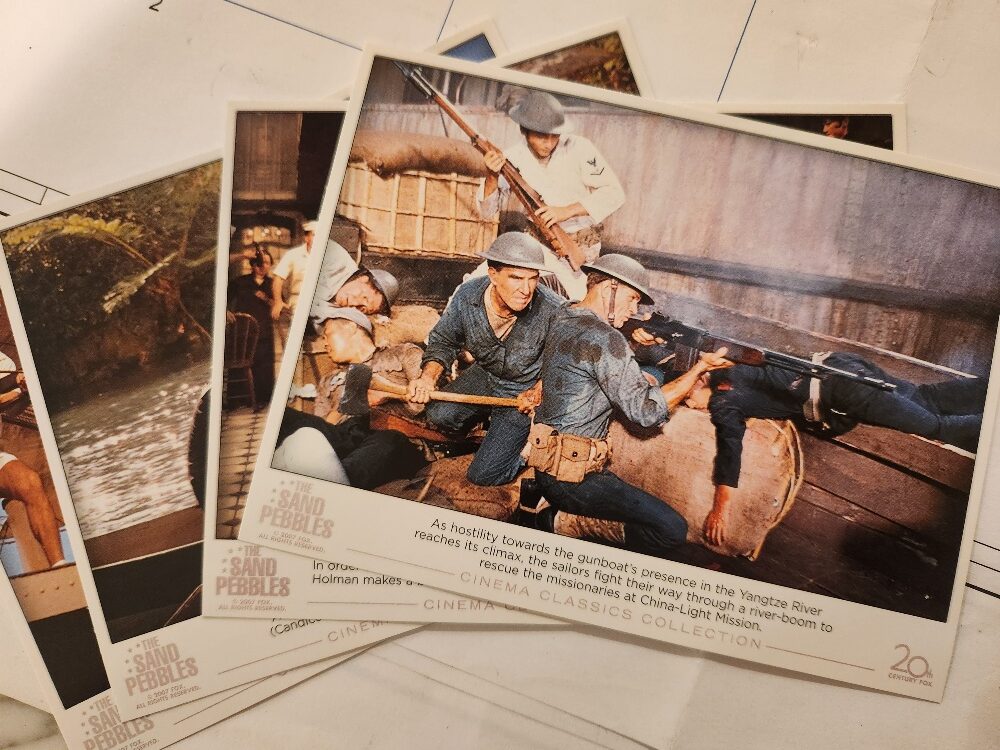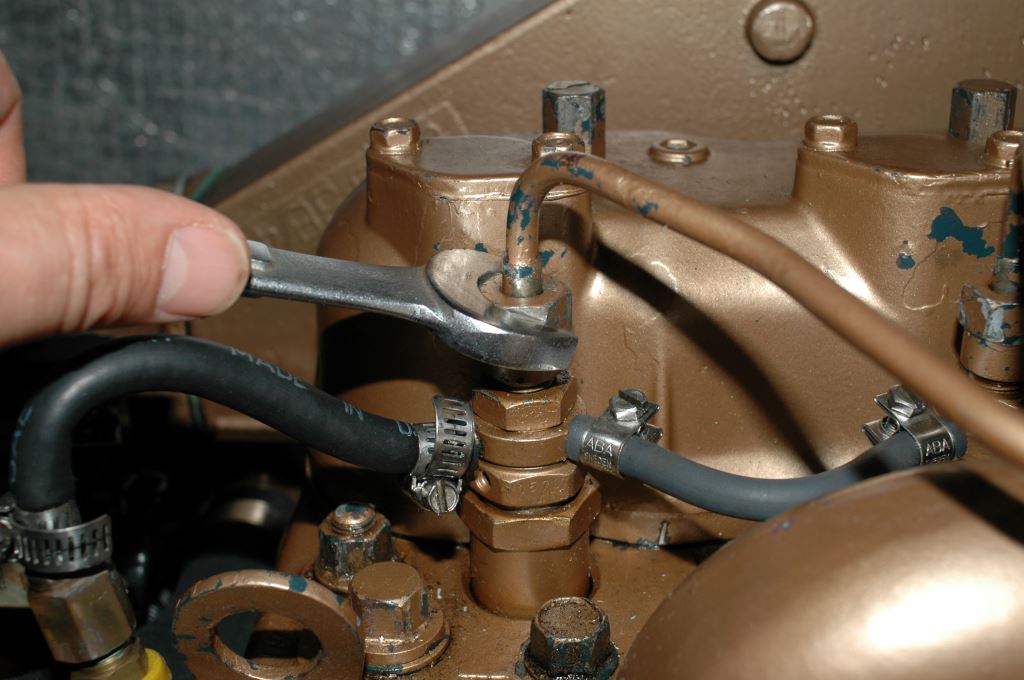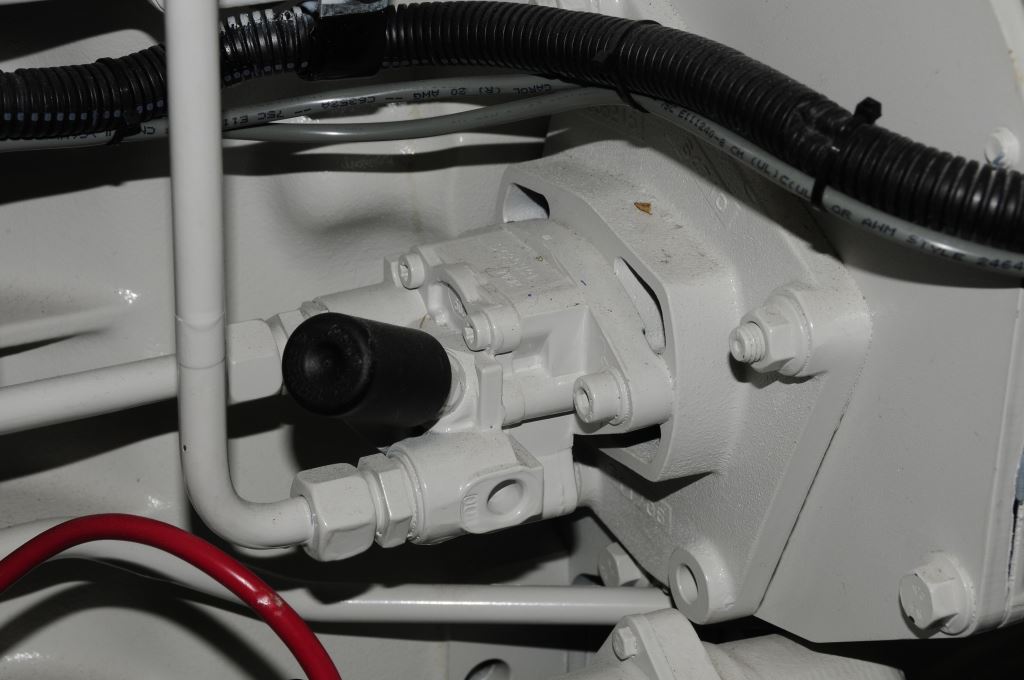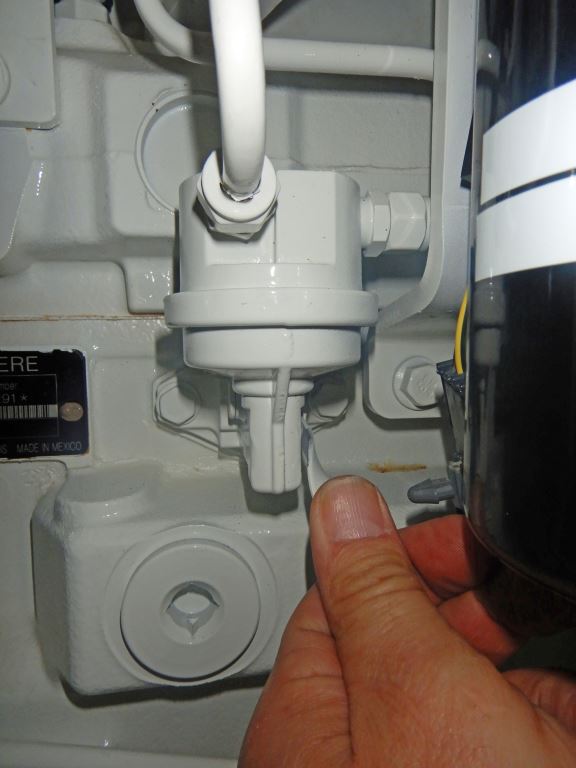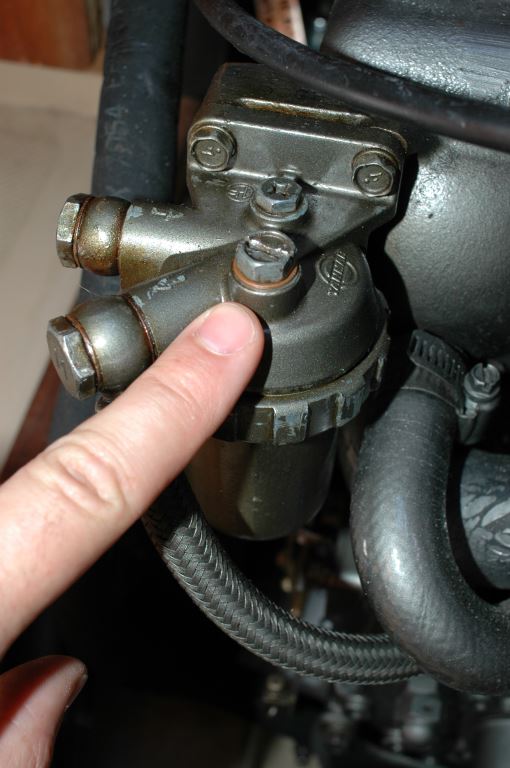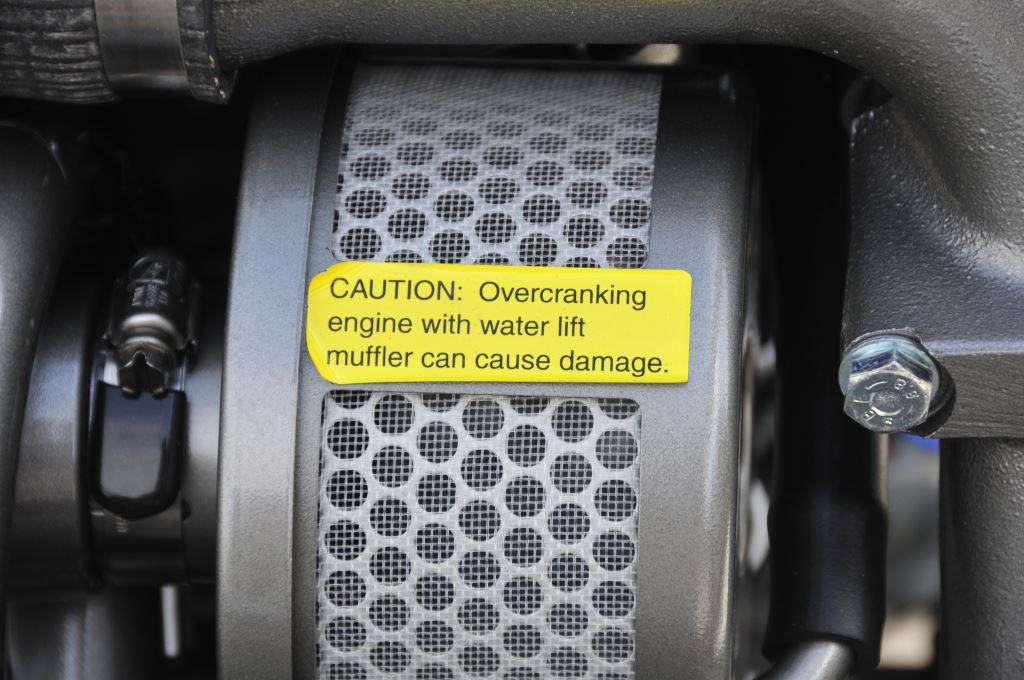From the Masthead
“The Sand Pebbles” a tribute to one of Hollywood’s best sea-going gearheads
If you are a Baby Boomer, you have likely seen this movie, you may have even watched it in a movie theater. I did, with my parents and older siblings, at a drive-in, although I was far too young to understand or follow the plot at that young age. However, the scenes of the San Pablo’s steam engine room, even then, left a lasting impression on me, and I have since become a die-hard fan.
Jake Holman takes aim with a Springfield ’03, in one of the most dramatic scenes of the movie (copyright 20th Century Fox). McQueen was a lefty, however; he’s holding this rifle as if he’s a righty, perhaps for cinematic reasons.
The Sand Pebbles is based on the eponymous book, published in 1962 by Richard McKenna, an Idaho native and a former U.S. Navy sailor, and while it is fiction, it’s based on his experiences as an engineer aboard U.S. Navy gunboats plying the Yangtze and other rivers in China in the 1930s (the story takes place in 1926, the age of gunboat diplomacy). It’s a rare case of the movie being mostly faithful to, and every bit as good as, the book on which it’s based; I highly recommend both.
The book on which the movie is based (I’ve marked pages that have particularly interesting details)
If you decide to purchase the movie, get the extended roadshow version, it’s fifteen minutes longer than the theatrical cut, the one that used to be shown on TV and is now on streaming services. Even the now commonly available theatrical release version is 3 hours long, when the extended version was shown to test audiences, the studio felt it was exceeding what most viewers were willing to endure (the movie actually has an intermission, which is included in the DVD). This led to some scenes being cut, however, as any Sand Pebbles aficionado will tell you, they are well worth seeing, including a fire aboard the San Pablo.
The roadshow extended edition DVD set, which also includes the “short”, 3 hour, theatrical release version.
There are very few movies I will watch more than once, and “The Sand Pebbles” is one of them. Recently, while on a trip to Hong Kong (it seemed appropriate), I watched this classic once again, perhaps for the tenth time. Invariably, each time I watch it I notice new details. While there are some errors and historical anachronisms (for instance, some rank insignia and uniform details, and weapons, are from the post gunboat era), the movie is noteworthy for its technical, engineering, and naval accuracy. When you watch it, take note of Holman’s rolled up dress blue jumper sleeves, visible while he sits in the row boat with Shirley. They are decoratively embroidered, likely with dragons, these were common for Far East sailors, a sign that the uniform was custom made by a local tailor; there is an allusion to custom-made uniforms in the movie.
The lead character, Machinist’s Mate First Class Jake Holman, played superbly by Steve McQueen, is a classic gearhead. In an early segment, when he first arrives aboard the San Pablo, before doing anything else, he heads straight to the engine room, and in what I believe is one of the most compelling scenes, introduces himself, “Hello engine, I’m Jake Holman”. His strained love interest, Shirly Eckhart, is played by a very young, and yet mature and poised, Candice Bergan (she was 19 when filming began).
“The Sand Pebbles” trivia booklet, provided with the roadshow DVD set.
The ship, the USS San Pablo (many consider her to be the fifth “star” of the movie), an authentic replica of the USS Villa Lobos, an actual Yangtze gunboat, is an old but sturdy Spanish American war prize, the 150-foot vessel used for the movie was specially built in Hong Kong by Vaughn and Yong (often incorrectly spelled Jung) Engineering Co. for $200,000, it was the most expensive prop of its day; powered by twin Cummins diesels (Cummins made a short promotional video about the project at the time it was built), the faux coal smoke is generated by a boiler. The ship was fully navigable, as she had to be able to travel from Hong Kong, to Taiwan and back; she had two working guns. After the film’s completion, she was saved at the last minute from the scrap yard; sold to a U.S. construction company engaged in bridge building in Vietnam, she was used as lodging for workers. In the 70s she was acquired by an oil company and used to house rig workers in Indonesia. She was finally scraped in Singapore in 1975. While most believe the book and movie are named after the ship, in fact, “Sand Pebbles” refers to the crew’s nickname for the ship, and “The Sand Pebbled” referred to the crew. This is explained in detail by McKenna in the book.
Both the movie and book are rife with intricate details and symbols related to the U.S. Navy, its sailors, and steam propulsion, of the 1920s; entire websites and forums are dedicated to exploring and dissecting this minutia, and I’ll confess I’ve been completely absorbed by this phenomenon.
“Lobby cards” provided with “The Sand Pebbles” roadshow edition DVD, this one showing Jake Holman shouldering (as a lefty would) a Browning Automatic Rifle, in the dramatic river boom scene. Note his engine room oil-stained uniform.
The movie was filmed entirely in Taiwan and Hong Kong, and as a hopeless devotee of both the book and movie, I have made pilgrimages to some of the shooting locations in northern Taiwan, Keelung, and Tam-Sui, which at the time could be made to look like 1920s China without too much effort, although today they are unrecognizable from the movie’s scenes. The production required 35 interpreters to direct the extras during the Taiwan filming (this was the first major motion picture to be filmed on the island, which at the time was still under martial law), and in some cases interpreters were needed for the interpreters to account for dialect differences. At one point, while filming in Hong Kong, the San Pablo drew real fire form Chinese Communist forces when she strayed too close to the border.
Steve McQueen said of the filming of this movie, “anything I ever did wrong I paid for in the filming of Sand Pebbles”, he claimed it took him a year to recover. Presumably this was because of the tropical heat and the filming schedule, which was arduous. Shooting was supposed to take 9 weeks, it lasted over 7 months; Taiwan is at the same latitude as, and shares a similar climate with, Cuba; Keelung sees 200 inches of rain a year.
This month’s Marine Systems Excellence e-Magazine feature covers the subject of bleeding diesel fuel systems, I hope you find it both interesting and useful.
Fuel System Bleeding
Bleeding air from the injectors’ plumbing requires only a loosening of the flare nuts, they should not be completely removed.
Some time ago, I received a frantic call from a client who was cruising (or not cruising as it turned out) in the Bahamas, aboard his 45-foote power vessel. Both his engine and generator had shut down simultaneously, he couldn’t get his anchor to set securely and he was dragging onto a lee shore. His satellite phone connection was tenuous at best, each time he carried the phone below to answer a question I’d posed, the connection would be lost. After roughly a dozen disjointed calls, I was able to ascertain that after experiencing a loss of rpm, he’d replaced all of the fuel filters, primaries, and secondaries, on both the engine and the genset. With that information, I concluded that he’d allowed air to enter the high-pressure fuel system of both engines. The solution seemed simple; bleed both engines, the propulsion engine first of course, and as quickly as possible, and move away from the beach.
The problem was, neither he nor his crew had ever bled an engine before, and they had no idea how to do so. After another dozen fragmented satellite calls, I’d managed to walk him through bleeding one engine. The moral of the story is self evident, learn to bleed your engine’s fuel system or suffer the consequences.
While the actual procedure for bleeding a fuel system varies from engine manufacturer to engine manufacturer, there is a large degree of commonality. Certain engines can be maddeningly difficult to bleed, while others are “self-bleeding”. Most modern, electronically-controlled, high pressure common rail diesel engines are self-bleeding, while pretty much all conventionally injected pump-line-nozzle models are not. Even if your propulsion engine is common rail, it’s very likely your genset is not, which makes this a skill worth knowing.
Generally speaking, the process goes something like this. If your engine utilizes a mechanical lift pump, this is the low-pressure pump that’s attached to the engine, it will often be equipped with a small lever, or in some cases plunger. Working this lever or plunger will enable the pump to move fuel without turning the engine over (as the engine is turned over, or cranked, and when it runs, a camshaft lobe or gear within the engine operates this pump). Opening pipe unions and bleed ports downstream of the pump one at a time, beginning with those closest to the pump first, and working the manual pump’s lever, will purge air from the low-pressure side of the fuel system.
A low pressure lift pump equipped with a plunger style primer.
The procedure for engines equipped with electric lift pumps is similar, instead of working a lever, however, turn the ignition key to the ON position (on some engines, the pump only runs when the glow plugs are operated, and when the engine is actually running, so the glow plugs may have to be actuated a few times during the bleeding process).
Many lift pumps utilize a lever style priming handle like the one shown here. If moving the lever doesn’t yield fuel flow, it’s possible the pump’s diaphragm is compressed by a cam shaft lobe (most diaphragm pumps are driven off he cam shaft). In that case, the lever will have no resistance, and no fuel will be pumped. This can be rectified by simply bumping the starter to get the pump’s push rod off the cam lobe.
The secondary or on-engine fuel filter (this is usually a spin on canister) is located between the lift pump and the high-pressure injection pump, and it is here that air often becomes trapped. Most secondary fuel filters, regardless of their design are equipped with a bleed screw. Opening this screw and working the lift pump lever until a clear, air free stream of fuel flows, means you’ve successfully bled the system up to that point.
Air must be purged from high pressure injection pumps, with some being more difficult to bleed than others.
The next major component after the secondary filter is the injection pump. Most are equipped with bleed screws, and thus the procedure is the same as the one used on the fuel filter, pump until you observe air-free fuel.
Most secondary fuel filters are equipped with a bleed screw like the one shown here.
At this point, you now must move into bleeding the high-pressure fuel system. If you’ve been successful in getting fuel to the injection pump, then the next step involves bleeding the injectors. This is accomplished by loosening the union nut between the top of the injector and the steel fuel supply pipe, no more than two turns, it’s not necessary to remove the fitting from the injector entirely. Then, place rags around these unions as fuel could squirt out, potentially under high pressure. With these unions loosened, crank the engine using the starter for 5 seconds. Temporarily remove the rags and inspect the area, if fuel fails to make an appearance at the unions, wait at least 30 seconds (to allow the starter to cool) and crank again for 5 seconds. The process could require several repetitions, however, when fuel begins to appear, it will only be a dribble – that’s normal, tighten the unions with a wrench and crank the engine with the throttle advanced 25%. It should catch at this point, albeit roughly at first, advance or retard the throttle as necessary to keep the engine turning until it begins to run smoothly.
If precautions are not taken, cranking an engine during fuel system bleeding can lead to flooding with raw water.
A note of caution is in order for the final portion of this procedure, if you must crank the engine for more than about 20 seconds in order to bleed the high-pressure fuel system, you must close the intake seacock. Each time the engine is cranked, it pumps water into the exhaust system and until the engine starts the water will accumulate there, where, depending on the exhaust system design, i.e. if it is not self-draining, it could eventually reach the exhaust manifold, exhaust valves and ultimately the cylinders. This is true for many propulsion engines and generators. If water makes its way into the engine, it will almost certainly cause extensive damage (see SDMC Marine System Excellence “Rescuing a Drowned Engine”). Remember, however, to open the seacock as soon as the engine begins to run; posting a reminder note at the key switch makes good sense, in the elation of a successful engine start, it’s easy to forget this step.

